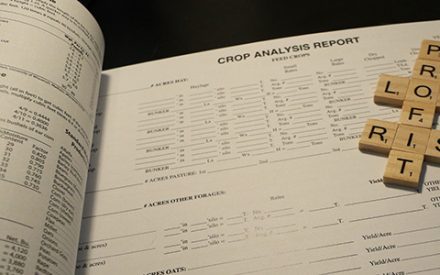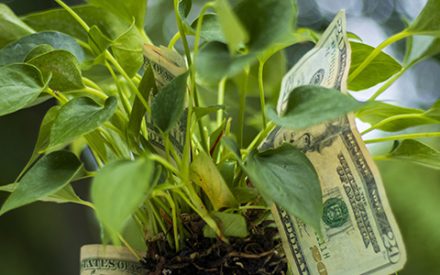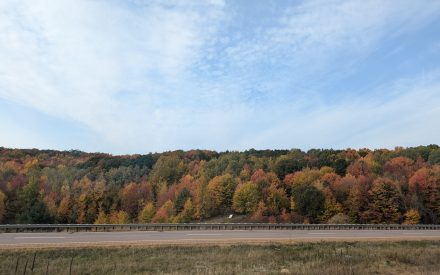Video Summary
In this video, Dan H. Smith, UW–Madison Extension nutrient and pest management program manager, presents an integrated approach to managing small grains like wheat, rye, barley, and triticale, with a focus on harvest, storage, and nutrient removal. He discusses best practices for harvesting small grains for cover crop seed, ideal moisture levels, storage options, and seed cleaning.
Dan also emphasizes the importance of monitoring grain quality, preventing pest issues, and understanding nutrient removal when straw is harvested. The presentation includes practical tips for calculating seed needs, managing storage conditions, and evaluating the economic value of straw and nutrient exports.
Resources
- Nutrient Application Guidelines for Field, Vegetable, and Fruit Crops in Wisconsin (A2809)
- Small Grains in Wisconsin
- Pest Management in Wisconsin Field Crops (A3646)
Transcript
0:05
Perfect.
0:05
Thanks, Jerry.
0:06
All right, so we’ll dive on into this presentation will cover quite a bit of ground today, but we’re thinking about this through the lens of wheat harvest is coming up, but also we’re going to be harvesting possibly our own cover crop seed.
0:17
So maybe we have 510 acres of rye planted or even wheat, oats, spring barley, triticale that we we’re going to think about harvesting for that cover crop value.
0:26
So we’re thinking about ideal moistures.
0:29
We’re not going to dive into a ton of detail and as far as maybe some combine setting considerations for disease pressures and such, such for that, there’s some outstanding resources from Dr. Shawn Conley and Dr. Damon Smith for those types of things on our various websites.
0:45
When we’re thinking about harvesting our crops, we’re thinking about 12 to 15% moisture depending on what crops they are.
0:52
And that’s going to be really key when we move into storing these. Say for maybe a month or two to plant these after maybe corn silage, a vegetable crop harvest or even eventually corn and soybean grains here in October and November.
1:06
So the moisture is going to be critical for storage.
1:10
Thinking about harvest timing, I think we’re really close to to harvest some small grains in Southern Wisconsin.
1:16
But typically we see this happening throughout the state in late July, throughout mid August.
1:21
Hopefully we’ll have some outstanding yields.
1:24
And then thinking about straw removal, if we’re going to take that straw off the field, we see anywhere from one and three quarter tons to 2 1/2 tons for some of these products.
1:32
So we’ll continue on into thinking about storing these.
1:36
So if we’re going to plant a small grain and then harvest it now in a month or month and 1/2 for cover crop value, we’ve already calculated out how much seed we need to plant.
1:47
But thinking about this for maybe next year, we’re going to have our seeding rate times the acres that we’re thinking about planting plus about 10%.
1:54
So if we’re planning to plant a bushel of rye on 100 acres and then 10% of that, we’re going to need 110 bushels of winter rye.
2:01
Same goes for example, 330 bushels is needed to cover 300 acres and that 10% is to cover anything that would be lost through storage or also through say cleaning.
2:12
So, we want to harvest this as clean as possible but if we’re going to be planting this via drill or an air seeder, that cleanliness of the seed is going to be much more important than planting that cover crop through say a spinner spreader, an airflow machine in some cases.
2:24
So we’re seeing typical seeding rates for all these small grains at a bushel for a lot of the agronomic benefits, say weed control, soil erosion purposes, water infiltration purposes.
2:34
But a lot of times we’re even planting say 20 lbs of these or maybe we’re going to fly a drone out and putitng on 15 to 20 lbs of these.
2:42
So again, thinking about this across the different species, about how much you’re producing statewide average of wheat, it was 30 bushels or an acre when I pulled this data.
2:52
That’s way too low.
2:52
And we’re hopefully we’re growing 70 to 100 bushel wheat.
2:56
And I know many producers in southern Wisconsin aim for 100 plus bushel wheat.
3:00
So we can think about moving through the same calculations of, well, if I’m producing say 70 bushel barley or 53 bushel rye on 10 acres, I’m going to have 530 bushels.
3:13
So I’m going to have a lot of acres.
3:15
I can then plant to cover crops on a very small acres of of of small grains grown for seed.
3:21
Remember that seed cleaning may reduce our overall harvested amount though of course.
3:26
And then we get a lot of questions about, well, what do I do with this then?
3:29
Now if I’ve harvested my 10 acres of rye for seed, there’s various solutions ranging from as cheap as $38 all the way up to $2.00 a bushel to stored in a seed bin.
3:41
So we need to be thinking about this.
3:42
I think the most common way to store our own cover crop small grain seed would be just putting in a gravity wagon.
3:48
And I’ll talk through that in a little bit more detail, but that’s going to be a very easy solution.
3:52
Seed tender would be very similar to that as well.
3:56
So if we’re thinking about storage, we also need to be thinking about how much we’re going to store, how many acres we’re going to plant.
4:01
All these different things have different storage volumes.
4:04
If we think back to our example, 330 bushels of rye, we could put that in an old used gravity box that we picked up for sale over the winter.
4:15
We also could put this in, say seven pro boxes.
4:17
So if we have pro boxes that we own for our own, say, soybean seed, we could put that rye and have enough 300 acres of rye in those seven pro boxes.
4:25
So storage is, is very affordable.
4:27
Obviously, these are tools we usually already have access to, especially gravity wagons on many farms.
4:32
We don’t need to store this for very long, especially if we’re going to be harvesting this, maybe having it cleaned and then planting it within again, probably six weeks if we’re following our small grains. If we’re following corn salvage and our corn grain and soybeans, then we got to store for a little longer.
4:48
There’s some challenges we should be mindful of storing small grains in general.
4:52
The grain can become too warm.
4:53
If the grain is too wet when we store it, we can have issues.
4:57
We do want to limit form material and fines, and that’s where insects feed on and that’s where we see heat and moisture held on to.
5:04
We want to check the storage temperature and we’ll go through checking storage temperature in a little bit.
5:10
We want to clean whatever facility we’re storing our small grains in and then finally want to check it during storage.
5:16
So just like crop scouting, there’s a little bit of a procedure for for checking these stored grains.
5:21
Not as severe if we’re going to just store them and plant them again for cover crop value.
5:26
But we’re going to keep these for a little bit longer period of time.
5:30
It’s probably good idea to keep some records of the grain.
5:33
We want to be noting the appearance of the grain.
5:35
We want to learn the insects that feed on small grains.
5:38
The roof condition of the storage facility is really important.
5:41
So even if we’re parking our 300 bushels of rye in the the machine shed, if there’s a hole in the roof right above it, that’s going to deteriorate that rye quite quickly if it gets rained on.
5:52
Note the odor, the grain moisture in the grain temperature.
5:55
There’s various sampling tools we can sample stored grain with, and there’s a special grain thermometer even.
6:01
Of course, many of us already have a grain moisture meter.
6:03
Many will do rye and wheat already, and finally take some notes of those conditions so you can do this again next year if it works out.
6:09
We want to be thinking about seed cleaning.
6:12
Typically it’s done by custom harvester type operation.
6:15
Someone will come to the farm and we’ll pay a set bushel amount and have the seed cleaned.
6:20
But we can pick up used seed cleaners that do a pretty good job cleaning rye for several thousand dollars.
6:25
But we do need to make sure that when we buy those, we have the small grains screen with them.
6:30
Clean grain is going to greatly improve storability.
6:32
It’s going to remove all that foreign material that would not store and would would deteriorate the good grain on the cracked and broken kernels are going to increase mold and insect chances.
6:42
And then finally helps control overall temperature, which is critical for storing these for long term.
6:47
And thinking about temperature in a little bit more detail. These screw and auger fans tend to be the tool of choice for farms harvesting their own cover crop, small grains and and planting them again. They are fairly affordable and you can put several of these based on volume and whatever storage facility you’re using.
7:04
As far as wagons go. If we have small grains, thinking back to moisture, again, I said that was key.
7:10
If we’re storing them for less than six months, we can get away with 14%, but we really need to get down to 13% if we’re storing for a little bit longer term.
7:18
But again, most cases, if we’re growing a small grain and we would intend to plant it back, we won’t have to worry about that as much.
7:26
We need to think about aeration.
7:28
So keeping the air in that grain is going to be important.
7:31
Moisture and pests lead to higher temperatures.
7:33
If we’re drying, we don’t want to exceed 90°F, which I don’t think is probably a concern for most of us not thinking about winter storage today.
7:40
So we’ll continue on.
7:41
And then finally, I’m keeping the pest out of the grain is really important during the summer.
7:46
We recommend inspecting every seven days.
7:48
I’m going to keep moving because this is more for colder temperatures, but as our moisture goes up, so if we get up to 19% moisture, we only can store that for about 10 days before we lose quite a bit of quality.
8:01
So be really thinking mindful of that if we’re storing this grain for any amount of time.
8:05
And then finally thinking about cover crop seed testing.
8:08
We can have seed analysis done at many land grant universities for very reasonable prices.
8:14
We want to sample about every 2000 bushels.
8:16
This is a pretty extreme case based on our 300 bushel example.
8:19
And then we’re going to send it about a quarter pound.
8:22
There’s some specialized sampling tools if we’re trying to sample an entire semi worth of grain and again, very affordable testing.
8:29
And then finally, when we purchase seed, we get a seed tag.
8:32
So that’s one of the purposes of seed testing is we’ll get our warm germination data and our purity data back and that will note weed seeds and such in that.
8:42
So I, I highly recommend having the seed tested, especially if we’re worried about contamination or we’re buying this from a neighbor or in some cases being allowed to sell it to a neighbor.
8:51
But we want to be mindful of any documents we signed in any trade tech agreements for that seed.
8:57
We obviously there are seeds that we can’t plant again after we grow them on our farm.
9:02
So we want to be really mindful to get that.
9:04
We also want to be mindful of the herbicide label rotation restriction.
9:07
So there’s restrictions on a residual herbicides. For the most part.
9:10
this isn’t a huge issue for seed production.
9:13
It’s more focused on forage production.
9:15
But we do want to know all the herbicides we used in our crop rotation and be mindful of those legal restrictions.
9:20
And then finally, it’s already time to talk about combine cleaning, a favorite topic of mine, but I’ve seen some really weedy wheat this year.
9:27
I’ve seen some excellent wheat, but I’ve seen some more giant ragweed got ahead of us.
9:31
Those seeds are big enough to move into the combine and cause future problems.
9:34
So we want to be careful managing those challenging sites as well.
9:39
And then finally to our nutrient values. So, if we’re removing the straw, this example’s for wheat, but if we’re removing the straw, we’re removing nutrients.
9:48
We want to be calculating that in cases where we’re selling that.
9:51
So, if we grew our own rye for seed and we’re going to sell that straw to a neighbor, we want to calculate out how much nutrients we’re removing.
9:59
Rye contains 12 lbs of nitrogen, 3 lbs of plant available phosphorus and 22 lbs of plant available potassium.
10:05
So we want to use our fertilizer value prices to calculate that for our individual setting to say, hey, we’re removing in this case 66 dollars’ worth of nutrients off of the land by that two ton of straw. That’s huge!
10:21
That’s a lot of nutrients because that means we also need to add on our bailing costs onto that and maybe our raking costs onto that.
10:27
So we need to be a little bit more mindful of that in some cases to maximize the value that we have and and straw has great value to us.
10:34
Finally, a few resources.
10:36
Nutrient values can be looked up in A2809 nutrient application guidelines for field vegetable and fruit crops in Wisconsin.
10:43
Small grains in Wisconsin’s, a publication we put together a few years ago.
10:46
There’s also a really nice topic hub article on the nutrient side of this and then A3646 our pest management publication.
10:54
I want to be reminding everyone that Wisconsin is Co-hosting the Midwest Cover Crop Council annual meeting in February of 2026.
11:02
So save the date February 10th and 11th in Dubuque, IA.
11:05
And then finally, I’ve got a question for everyone.
11:07
So everyone who reads the crop manager, several states around us put together a regional update.
11:14
Regional updates will be written by regional extension staff and provide local insights into crop progress and any local challenges to monitor.
11:22
The example shown on the screen is from Iowa State.
11:25
Before putting in a lot of time and value into this project, I wanted to ask you if you saw a value in a regional crop update section of Wisconsin crop manager.
11:33
So they’ll be a poll question popping up at some point to ask you that.
11:36
So think about if you would want to know what’s going on in say, Southwest Wisconsin, would that be valuable to you as a crop consultant or farmer?
11:44
With that, we can continue on.
11:46
Thanks everybody.
Badger Crop Connect
Timely Crop Updates for Wisconsin
Second and fourth Thursdays 12:30 – 1:30 p.m.
Live via Zoom

 ▶ Fall 2025 Financial Assistance for Producers
▶ Fall 2025 Financial Assistance for Producers ▶ Fall 2025 Ag Policy Update
▶ Fall 2025 Ag Policy Update ▶ Fall 2025 Corn and Soybean Market Outlook
▶ Fall 2025 Corn and Soybean Market Outlook ▶ November 6 Ag Weather Outlook for Wisconsin
▶ November 6 Ag Weather Outlook for Wisconsin


